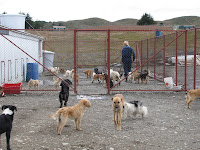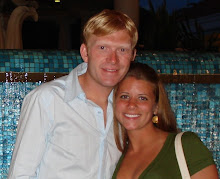We have experienced quite a bit. We have laughed in happiness and laughed in uneasiness. We have cried in happiness and cried in frustration.
Places that once seemed far off now seem close and familiar. We now have photos of our own to match the picturesque beaches and mountains found on wall calendars. News headlines from distant countries now appear with the names of places we have visited and with faces that look recognizable.
We have wandered through vast unfamiliar countrysides and intimidating crowded urban city centers. Along the way we have met some amazing people who have shared part of their day with us, and for that we are grateful. People have been incredibly open and inviting; whether it was some fruit on a crowded African bus, stories of mountain legends during a trek in Nepal or a comfy spare bedroom to rest for the night.
We have embraced the spirit of many we have met who only have the few possessions they carry on their back (items they are usually offering to share) and who are simply living to see what each new day brings.
We have witnessed many things that have allowed us to further realize how fortunate we are to live in such an amazing country. Our aspirations are not limited in life by our sex, where we were born, who are parents are or what our economic situation might be. Basic education is a given to us and we openly decide where we will work, whom we will marry and where we will choose to live. The American Dream is alive and well and we must never forget that. It is truly unique in the world, even when considering other highly developed countries.
We have experienced all of this together, as a couple, as best friends. We have been through situations and felt emotions that we might never experience in a lifetime within the confines of our normal everyday lives.
We are moving forward in life, somewhat reluctant to let go of the trip, but refreshed and enlightened. We have never been ones to get too comfortable. We like the unknown and the excitement of walking into a new place; whether it be the next border crossing while traveling or seeking out a new corner pub or park the next neighborhood over.
We are different people than when we left. We are better global citizens, seeking out the origins of products we buy and supporting causes we have witnessed in action improving communities we visited during the last year. The adventure does continue; we are living in a new town (Denver, CO(actually since we posted this we have now relocated from Denver to Seattle, WA!)) and seeking out new employers and revised goals in life. Discussions of purchasing tangible material items are now weighed against new life experiences and helping others. We are not saints by any stretch, but we hope we can make a larger difference moving forward.
Thank you for sharing on this amazing adventure with us. We have always told ourselves that this is a 'once in a lifetime opportunity' and just to shake the 'travel bug.' We have now realized there is no reason to limit something to 'once in a lifetime' given our amazing experiences and the opportunity to do so much more in many of the countries we visited. We now wish we might have done more goodwill in our travels and hope that we may do so in the future. So until we meet again, whether it is on the blog or in person, live life well.
'And in the end, it is not the years in your life that count. It is the life in your years.'
~Abraham Lincoln



-Chad & Colleen


 We are now back in the USA and greatly enjoying what we believe are the best craft beers in the world but we do miss the excitement of discovering new brews nearly every day. It was most definitely an enlightening and enjoyable year exploring this wonderful beverage.
We are now back in the USA and greatly enjoying what we believe are the best craft beers in the world but we do miss the excitement of discovering new brews nearly every day. It was most definitely an enlightening and enjoyable year exploring this wonderful beverage.

























 As with the glacier, we had a bit of solidarity as we sat quietly staring at the beautiful formations. We headed down quite happy with our decision to make the extra journey and crawled into our tent with great anticipation of the next morning.
As with the glacier, we had a bit of solidarity as we sat quietly staring at the beautiful formations. We headed down quite happy with our decision to make the extra journey and crawled into our tent with great anticipation of the next morning.
